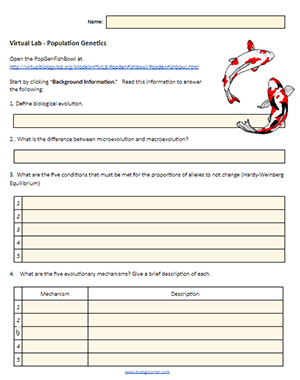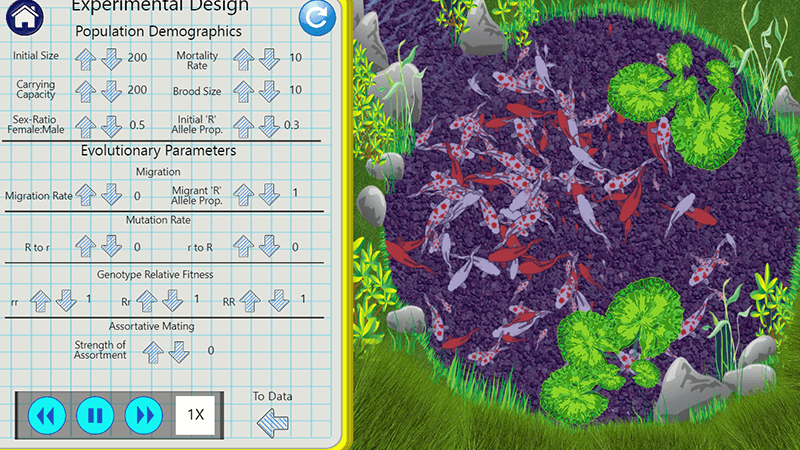
Students learn about Hardy-Weinberg equilibrium by exploring a virtual population of koi fish. This virtual lab allows students to run experiments where they can change variables, like population size, migration rate, mutation rate, and fitness of two separate alleles.
The alleles being studied control the coloration of the fish. Fish can either be white, gold, or mottled. When all the conditions of Hardy Weinberg equilibrium are met, the p and q alleles exist at a .5 frequency each. Changing any of the five requirements, such as migrations and mutations will affect the allele frequencies.
Student complete a worksheet that first asks them to read the background information on population genetics. They summarize the five conditions needed for a population to be at equilibrium.
They then manipulate variables to explore how equilibrium is not achieved when factors such as selection strength are included. For example, if white coloration had a lower fitness, then over time, there would be fewer white alleles in the population.
Hardy Weinberg Fish Bowl

The entire exercise was developed during the Covid-19 pandemic and was designed so that students could complete it independently from from. It is similar to the Hardy Weinberg Squirrel activity.
HS-LS4-3 – Apply concepts of statistics and probability to support explanations that organisms with an advantageous heritable trait tend to increase in proportion to organisms lacking this trait.
HS-LS4-4 – Construct an explanation based on evidence for how natural selection leads to adaptation of populations.

